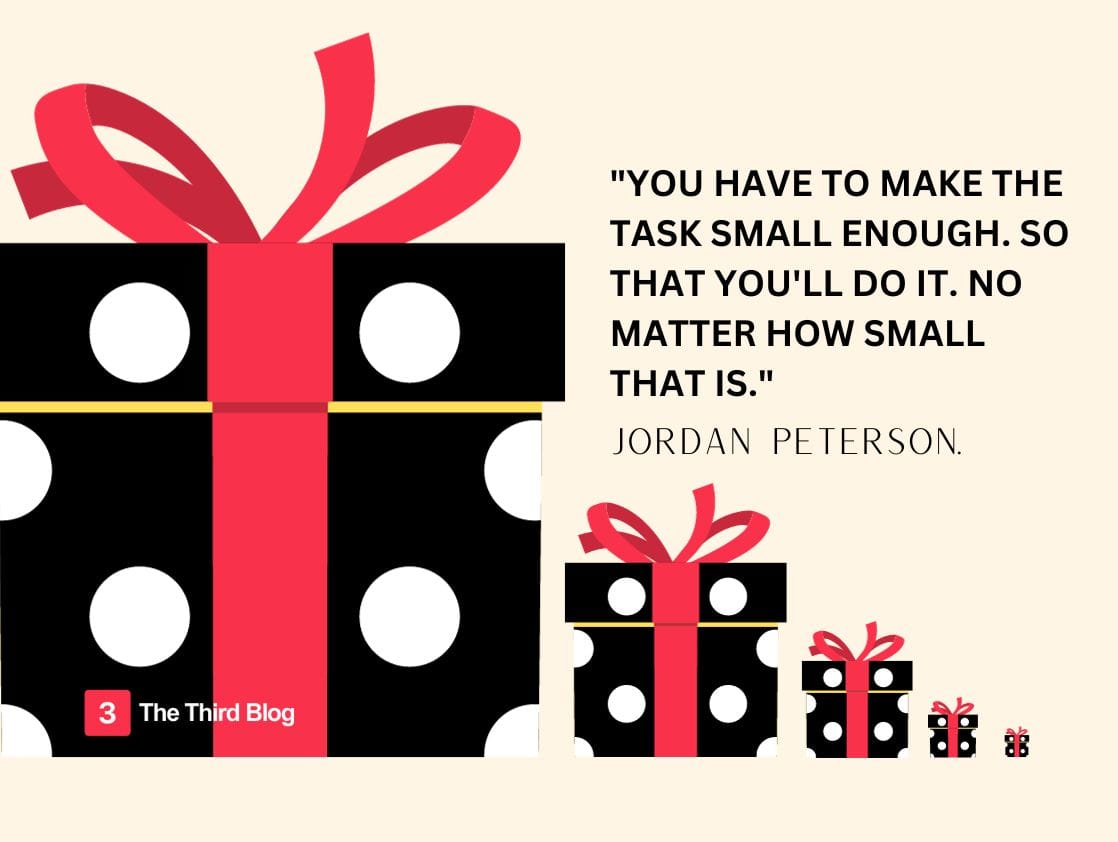“At any given moment, you are always doing what you want to do”. Just don’t pretend it’s a time issue when in reality it’s just not a priority. - Unknown
Procrastination is a common struggle, a barrier that keeps many from reaching their full potential. In our quest for efficiency and productivity, we often overlook a fundamental solution rooted in simplicity: setting small, achievable goals. This approach aligns with the concept of 'Simplexity'—the idea that the simplest solutions are often the most effective for complex problems.

Putting things off is the biggest waste of life: it snatches away each day as it comes, and denies us the present by promising the future. The greatest obstacle to living is expectancy, which hangs upon tomorrow and loses today. - Seneca
Understanding Procrastination
Procrastination isn't just about poor time management or laziness. It's often a response to anxiety, fear of failure, or overwhelming tasks. When a project feels too big, too complicated, or too daunting, the natural human response can be to avoid it altogether.
The Simplexity Approach
The key to overcoming procrastination lies in breaking down the intimidating complexity of tasks into smaller, more manageable parts. This is where the philosophy of Simplexity comes into play. It teaches us to deconstruct tasks into their simplest form.

Small Goals: The Building Blocks of Progress
Small goals act as stepping stones towards your larger objective. They are easier to manage, less overwhelming, and provide a clear path forward. Each small goal achieved is a victory, a boost to your confidence and motivation.
"You have to make the task small enough. so that you'll do it. no matter how small that is." - Jordan Peterson.
How to Apply This in Daily Life
- Identify the Larger Task: Start by clearly defining the bigger project or goal you are procrastinating on.
- Break It Down: Divide the larger task into smaller, more manageable goals. These should be actions you can complete in a relatively short amount of time.
- Set Realistic Deadlines: Assign a reasonable deadline for each small goal. Deadlines create a sense of urgency and help maintain focus.
- Celebrate Small Wins: Acknowledge and celebrate the completion of each small goal. This reinforces positive feelings associated with task completion.
- Maintain Momentum: Use the momentum from each small achievement to propel you to the next goal. Let the satisfaction of each completed task fuel your progress.
- Adjust as Needed: Be flexible and willing to adjust your goals if they still feel too large or daunting. The key is to make each step feel manageable.
The Psychological Benefits
This method not only helps in tackling procrastination but also has psychological benefits. Small successes release dopamine, a neurotransmitter associated with feelings of pleasure and motivation.
This biochemical response can create a positive feedback loop, making you more inclined to continue working towards your goals.
Conclusion
Procrastination is a complex issue, but the solution doesn't have to be. By embracing the simplicity of setting small, achievable goals, we can overcome the inertia of procrastination.
This approach, grounded in the 'principles of Simplexity', transforms our outlook from seeing an insurmountable mountain to a series of attainable hills.
Start small, and you'll be amazed at how quickly you can climb.
T3B
Disclaimer
The content provided on this blog, including all text, images, and other material, is for informational purposes only and does not constitute professional advice. The information related to finance and health, as well as other topics, reflects my personal opinions and experiences, and is not intended as a substitute for professional consultation.
While I strive to provide accurate and up-to-date information, I am not a certified financial advisor or a healthcare professional. Therefore, any actions taken based on the content of this blog are at the reader's own risk. I encourage readers to seek professional advice before making any significant decisions related to finance, health, or any other topics covered in this blog.
Please remember that the views expressed on this blog are mine alone and do not reflect the opinions of any professional organizations or affiliations I may have.






